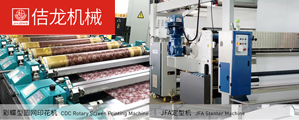Cotton yarn prices accelerated rise, the market can digest?
Aug 16, 2021 | by Zhao Xinhua

According to the feedback from cotton spinning mills in Jiangsu, Zhejiang, Shandong and other places, due to the significant increase in Zheng Cotton and Zheng Yarn since late July and the increase in the price of imported cotton yarn, the ex-factory price of cotton yarn and the quotation of various textile markets have been raised, generally above 500 yuan/ton, OE yarns and low-count spinning yarns rose in smaller, and the high-count yarns of 50S and above rose slightly larger. Spinning companies quickly passed the risk of rising raw materials to consumer terminals such as grey cloths, fabrics, and clothing.
A cotton yarn trader in Shaoxing, Zhejiang said that due to the wide fluctuations of Zheng cotton and Zheng yarn, and the heavy rainfall in Henan and other provinces, the cotton spinning mills’ orders were greatly affected. In the past two days, the domestic C32S mid-to-high-end automatic winding quotations have generally risen to 27,200-27,500 yuan/ton, 600-700 yuan/ton higher than in early July, which is significantly weaker than the increase of Zheng yarn and Zheng cotton.
From the survey, weaving, fabric factories and middlemen in Jiangsu, Zhejiang, Guangdong and other places on the cotton yarn digestion capacity is limited. As cotton spinning mills and cotton yarn traders increase their quotations, except for OE21-OE32S inquiries and transactions, which are relatively active, the shipment of standard yarns of 40S and below continued to slow down.
The bargaining power of downstream fabrics, clothing, foreign trade factories and other factories is not strong, and the profit of orders is low. The sharp increase of cotton yarn not only leads to a rapid increase in the difficulty of completing downstream contracts from July to September, but also is very cautious about connecting with orders in the fourth quarter of 2021. In addition, compared with domestic yarns, the price increase of imported yarns and bonded yarns is lower (quoted in USD), and the price competitive advantage is more and more prominent. Some coastal weaving and garment factories have expanded the procurement of cotton yarns from Vietnam, Pakistan, Central Asia and other producing areas.








